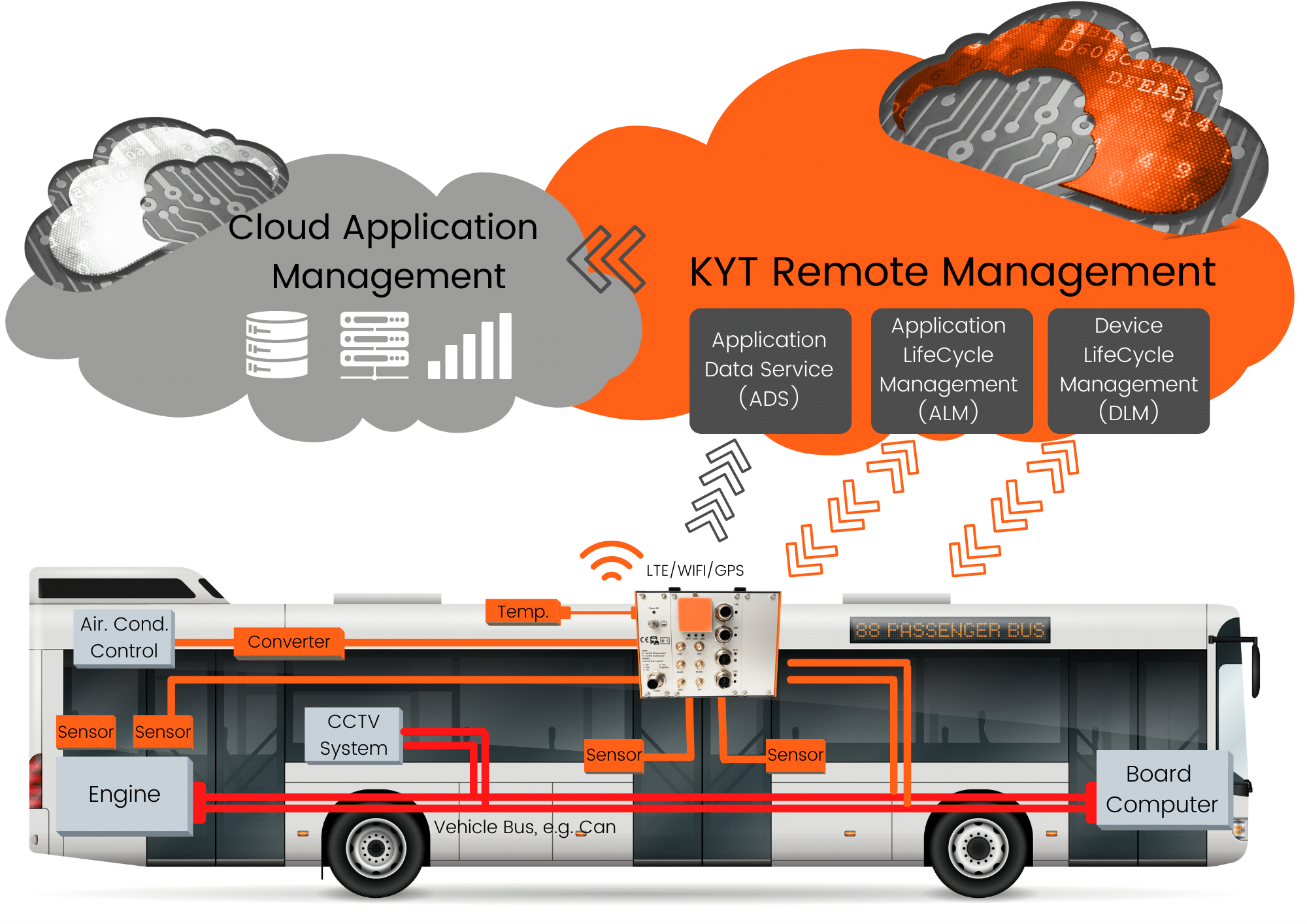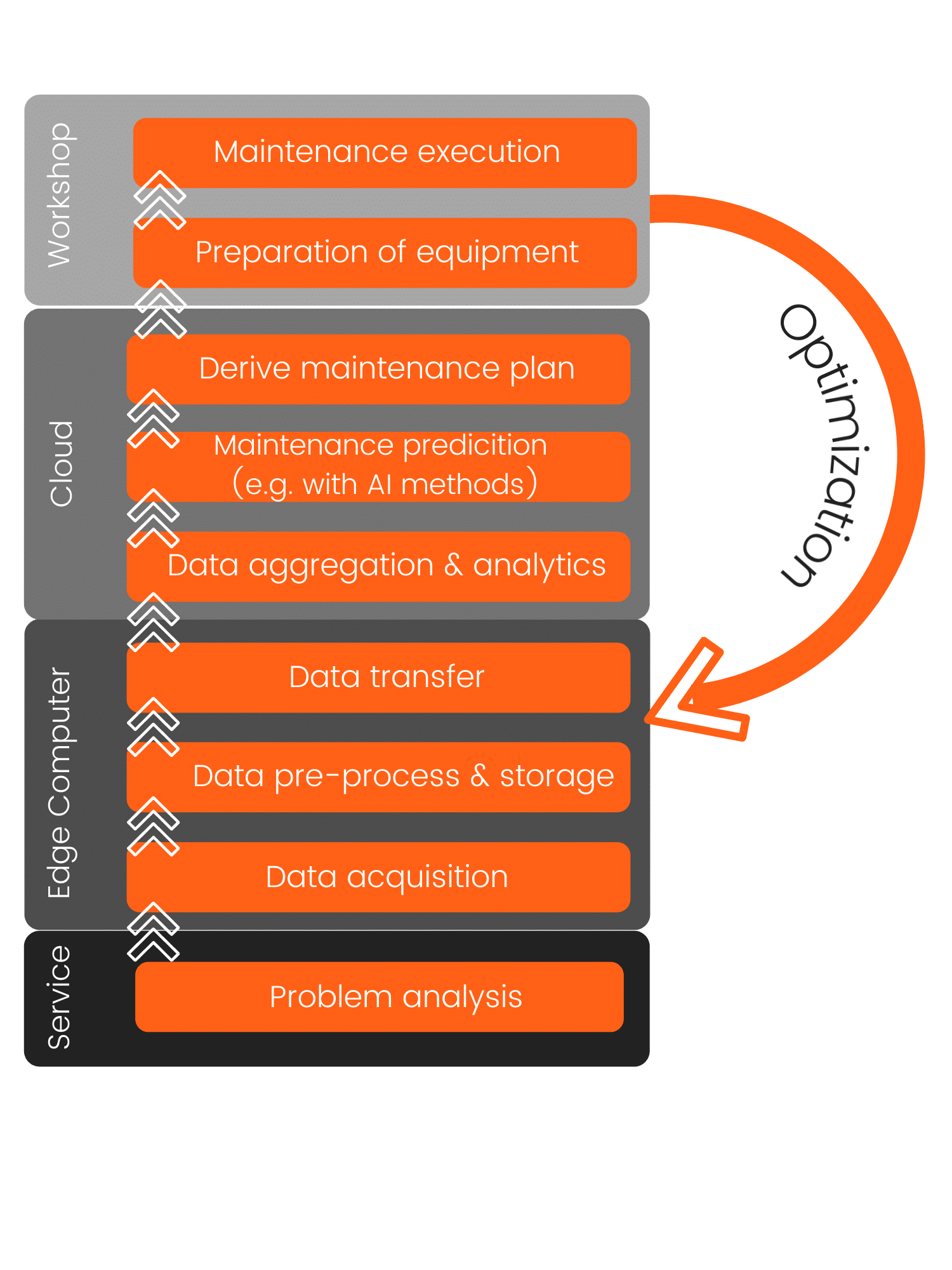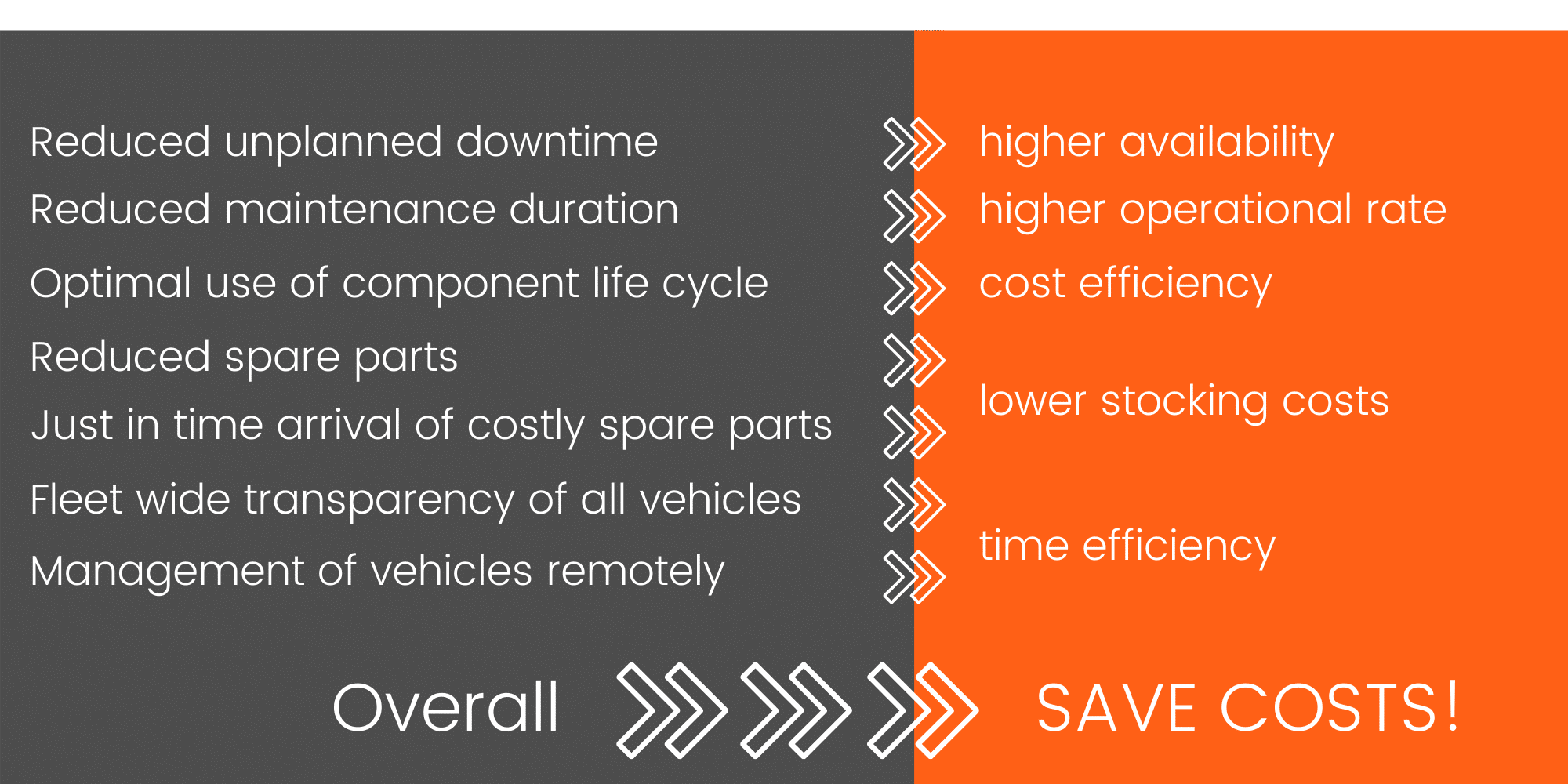Predictive Maintenance of public transport busses
Being reliable and in-time is mandatory for public transport operators. Mostly serving a locally reduced area of a city, as many people as possible shall get access to public transport. Besides subways and trams, busses are the most popular method to compete against individual automotive transport. Busses are running up to 20 hours a day in several shifts.

Problem
Different vehicle types in multiple generations from different suppliers makes it hard to monitor and manage a fleet, missing overview leads to downtimes, as reliable status data are a great deal of work.
How it could be
Manage, visualize and maintain remotely all subsystems in your vehicles with only one computer platform. Reaching from smallest sub-system to Board Computer, independently from supplier or vehicle generation.
Why?
Get higher availability and operational rates, lower your stocking costs, save dramatically time in your system management. To make it short: save costs!
The problem: downtimes and incompatibility of fleet management systems
In order serve the transport mandate operates have to provide 10..20% more vehicles as originally needed for the people transport to compensate vehicle shorts through inspections, failures, defects, or simply delays. This is a tremendous cost factor not even for invest, but mainly for maintenance.
A public transport bus is less complex than rail vehicles, nevertheless they do have mission-critical subsystems onboard which – by failure – can limit the comfort, certain functions or even the availability of this bus.
In addition, a fleet wide management system from an operator standpoint is missing, being aware that for an operator, a fleet does not only consist from one type / generation of bus but also from trams, subways etc.
Can I make a whish, please? How it should be
For efficient operation of a fleet of busses, it is mandatory to keep operation costs as low as possible. Therefore a high operational rate by reduction of downtime is necessary. No unplanned downtime, minimized planned downtime.
To keep management effort low a live fleet management system covering all vehicles depending on their location, health status, occupancy, daytime, temperature and other influencing conditions creates great benefits.
With other words, a holistic management system from the view of an operator, not from vehicle or sub-system manufactures.
The solution: how KYT meets the demands
The KYT portfolio is the ideal platform for:
- digitizing sub systems w/o available condition-based data
- collecting data from sub systems
- pre-processing those data and combining with other metrics like occupancy, daytime, location, temperature inside/outside
- transmitting the condition data to the cloud
- analyze the data, correlate fleet-wide, derive predictive applications
- deploy and manage your applications in cloud and edge computer
- managing entire fleet remotely from the cloud

By enabling containerized applications running on the edge and in the cloud, the data can be analyzed, and a digital twin of a sub-system or even the complete bus can be created.
The condition data from connected sub systems can be gathered by several means:
- KYT ModuCop connects to a maintenance interface of a sub-system e.g. by converters
- KYT ModuCop connects to the vehicle bus (e.g. CAN/IBIS), where diagnosis data might already being published
- KYT ModuCop connects non-digitized sub-systems by own sensorics (vibration, temperature, mech. tension) – wired or wireless – to the edge computer.

After a first phase of data collection over several vehicles (as more as better) a sub-system (e.g. engine) behavioral model can be created which – considering the surrounding conditions of location, temperature, occupancy, operating hours, etc – stands for a “golden” reference model. Any data from the vehicle can now be compared to the reference model, deviations are identified immediately. Deviations from defined limits are then indicators to a soon failing sub-system. To avoid false positive deviations, data hygiene is mandatory.
With this live indication of the vehicle condition, not only a failure can be predicted, but maintenance activities can be scheduled in advance, meaning a work order for next maintenance execution to check critical sub-system, ordering spare parts in time for the workshop to enable efficient maintenance.
While getting new data every day, the reference model can be improved continuously which creates an even better interpretation of deviations and therefore a more accurate prediction of failures over time.
Besides the value generation through condition-based data, KYT offers the possibility of system/vehicle transparency and fleet management with its Device Lifecycle Management. All devices can be managed, visualized, updated remotely over the complete life cycle without the need of local presence in the vehicle.
By using KYT platform, the management is easily extended to the complete fleet of a public transport operator including trams, subways, and wayside systems.
Why KYT? These are your Benefits

To bring the advantages to the point: with the use of KYT, you reduce unplanned downtime for higher availability, reduce maintenance duration for higher operational rate, benefit from an optimized use of component life cycle, reduced spare parts and get costly spare parts just in time, which lowers your stocking costs, get a fleet wide transparency of all vehicles and you are able to manage vehicles remotely. All in all – you will save costs.